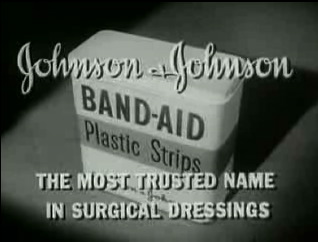 Monsanto, one of the most controversial corporations in the United States, now finds itself the target of a takeover campaign by German pharmaceutical and chemical giant Bayer. Would a change in ownership improve the behavior of the biotechnology company dubbed “Mutanto” by its critics?
Monsanto, one of the most controversial corporations in the United States, now finds itself the target of a takeover campaign by German pharmaceutical and chemical giant Bayer. Would a change in ownership improve the behavior of the biotechnology company dubbed “Mutanto” by its critics?
Answering that question requires a look at Bayer’s own track record, which is far from unblemished. Most Americans associate Bayer with aspirin. The company created the analgesic in 1899, but during World War I the U.S. government seized Bayer’s American assets and allowed other firms to sell aspirin under the Bayer name until the German company bought back the rights in 1994.
In the 1920s Bayer was absorbed into the massive IG Farben cartel, which used slave labor and supported the Nazi regime. After the Second World War it re-emerged as one of the companies created through the break-up of IG Farben. During the 1950s it began to return to the U.S. market through efforts such as a joint venture with Monsanto (in its pre-agribusiness era) called Mobay Chemical.
As Bayer has stepped up its U.S. involvement over the past two decades it has gotten embroiled in one scandal after another. In 1997 one of its subsidiaries based in New Jersey pled guilty to criminal price-fixing and had to pay a $50 million fine. In 2000 Bayer had to pay $14 million to the federal government and the states to settle allegations that it inflated prices on drugs sold to the Medicaid program. In 2001 it was accused of price-gouging on the antibiotic Cipro, which was then in high demand because of the anthrax scare. It later had to pay $257 million to settle a federal lawsuit on Cipro overcharging.
In 2003 documents emerged suggesting that Bayer was aware of serious safety problems with its cholesterol drug Baycol long before the medication was withdrawn from the market. In 2004 Bayer had to pay a $66 million fine in another criminal price-fixing case. A 2008 explosion at a Bayer pesticide plant in West Virginia that killed two workers led to regulatory penalties including a $5.6 million settlement with the EPA. A report found that management deficiencies played a significant role in creating the conditions that caused the explosion.
That’s just the quick version of Bayer’s controversies. For more see the website of the Coalition against BAYER-dangers, a German watchdog group that has been monitoring the company for more than 30 years.
Perhaps most troubling is the fact that Bayer has already been active in the businesses in which Monsanto has gained its checkered reputation: agricultural chemicals and genetically modified seeds. Before the Monsanto bid, Bayer was in the news most often because of concerns that its pesticides were responsible for sharp drops in bee populations.
The chances that a Bayer takeover of Monsanto will get the U.S. company to clean up its act seem slim indeed. In fact, the combined company will probably be an even bigger threat.
 In submitting his new
In submitting his new Bring back manufacturing jobs: For years this has been put forth as the silver bullet that would reverse the decline in U.S. living standards and put the economy back on a fast track. The only problem is that today’s production positions are not our grandparents’ factory jobs. In fact, they are often as substandard as the much reviled McJobs of the service sector.
Bring back manufacturing jobs: For years this has been put forth as the silver bullet that would reverse the decline in U.S. living standards and put the economy back on a fast track. The only problem is that today’s production positions are not our grandparents’ factory jobs. In fact, they are often as substandard as the much reviled McJobs of the service sector. Baby powder, the product along with Band-Aids that for decades gave Johnson & Johnson a benign image, is now the latest symbol of its deterioration into one of the most unreliable of large corporations. Juries have recently awarded a total of $127 million to women with ovarian cancer who charge that their disease was caused by the talc in the company’s powder.
Baby powder, the product along with Band-Aids that for decades gave Johnson & Johnson a benign image, is now the latest symbol of its deterioration into one of the most unreliable of large corporations. Juries have recently awarded a total of $127 million to women with ovarian cancer who charge that their disease was caused by the talc in the company’s powder.